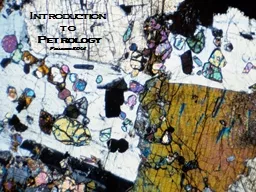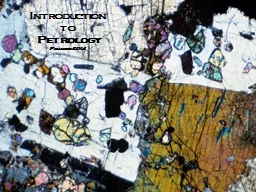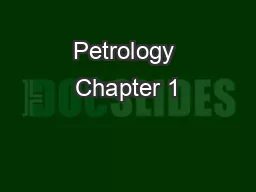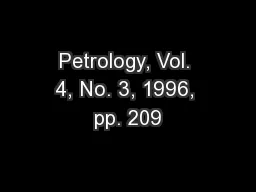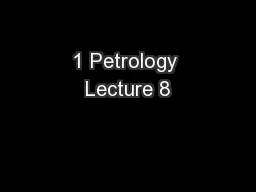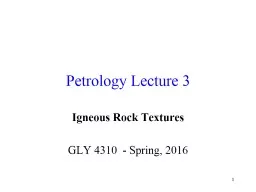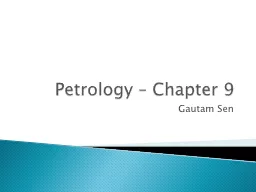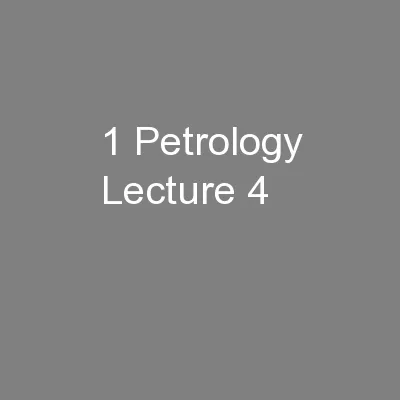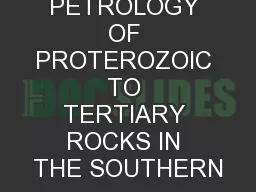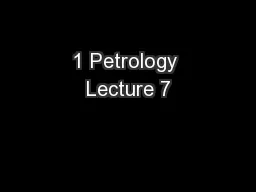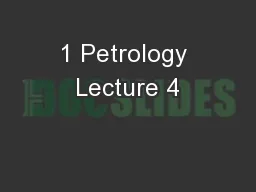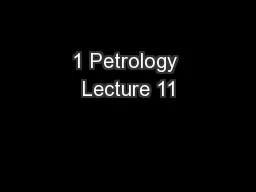PPT-Introduction to Petrology
Author : stefany-barnette | Published Date : 2019-12-26
Introduction to Petrology Francis 2014 Introductory Petrology EPSC212B Don Francis Room FDA 316 donaldfrancismcgillca Documents wwwepsmcgillca c212 1 Igneous
Presentation Embed Code
Download Presentation
Download Presentation The PPT/PDF document "Introduction to Petrology" is the property of its rightful owner. Permission is granted to download and print the materials on this website for personal, non-commercial use only, and to display it on your personal computer provided you do not modify the materials and that you retain all copyright notices contained in the materials. By downloading content from our website, you accept the terms of this agreement.
Introduction to Petrology: Transcript
Download Rules Of Document
"Introduction to Petrology"The content belongs to its owner. You may download and print it for personal use, without modification, and keep all copyright notices. By downloading, you agree to these terms.
Related Documents

